Trees with red berries – our favorite berry trees for color and interest
Trees with red berries will add vibrancy to your garden in the bleakest months, and provide vital food for wildlife. Discover the best varieties to plant
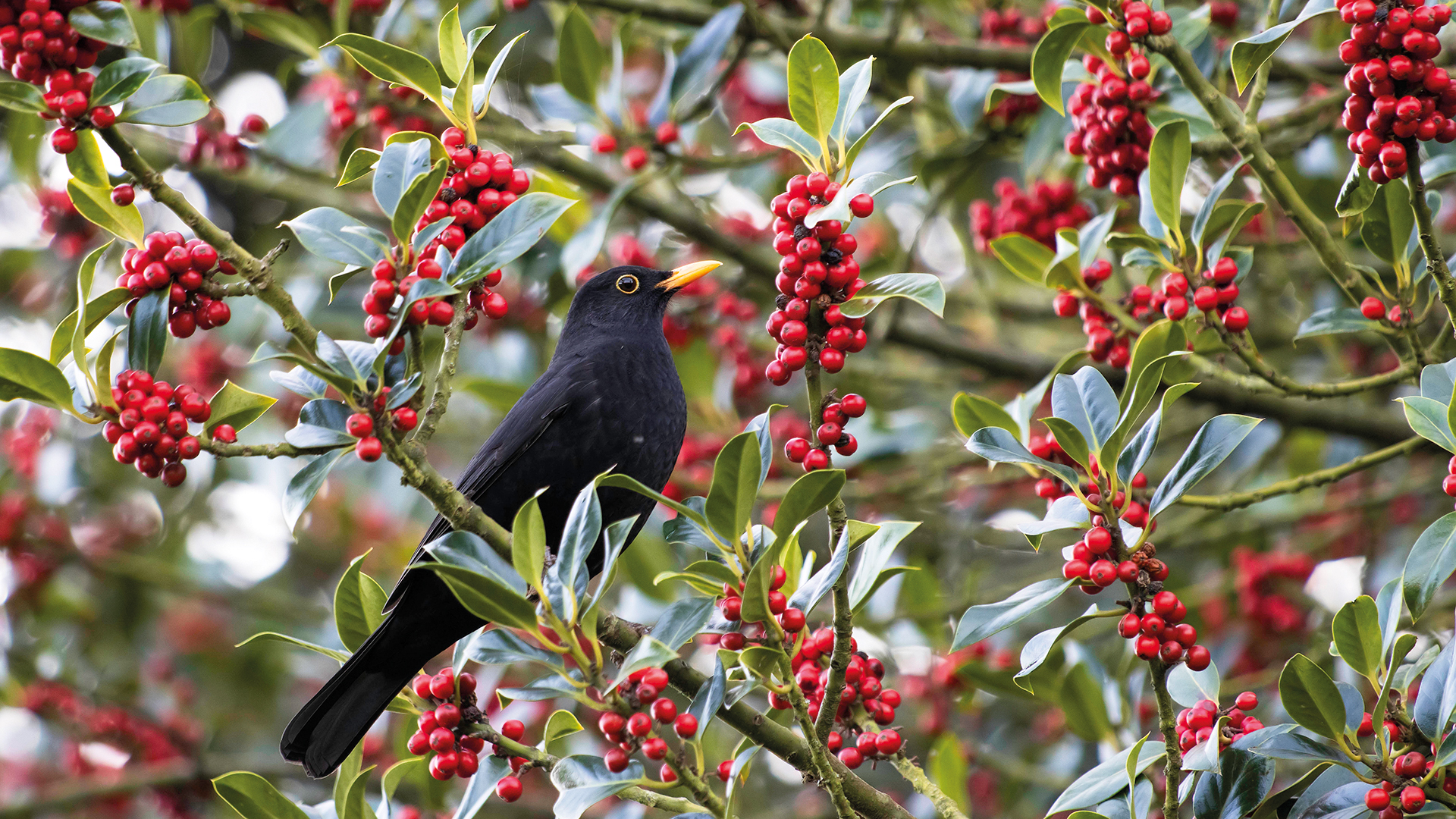

Trees with red berries will provide interest in fall and winter, adding joyful color when the rest of nature is winding down. However, some varieties will add an accent in the summer, and many have beautiful flowers in the spring, too.
There are trees with red berries to suit every garden setting, and the right choice will add seasonal impact to your backyard ideas.
‘Trees with red berries are decorative and offer visual interest, especially during the winter months,’ says Pete Smith, urban forestry program manager at Arbor Day Foundation. ‘Many of the berries can also be collected for consumption and provide valuable food for wildlife.’
Trees with red berries
These are our favorite trees with red berries. Several varieties can be grown as evergreen hedges, which makes them some of the best trees for privacy and screening in a backyard.
When choosing trees with red berries to suit your garden, you must only plant species that will thrive in your area. Knowing your USDA plant hardiness zone is essential, and happily there are options for almost every climate.
You also need to ensure your chosen tree is compatible with your soil type, the level of sunlight it will receive, and how much maintenance you are able to provide.
Check its maximum size and growth rate to ensure it won't outgrow your yard, and learn how to plant a tree correctly.
Design expertise in your inbox – from inspiring decorating ideas and beautiful celebrity homes to practical gardening advice and shopping round-ups.
Finally, consider whether you want a tree with edible red berries, or are only concerned with its ornamental value.
‘As a longtime forager and permaculture gardener, my favorite trees with red berries all have edible or medicinal fruit,’ says Susannah Shmurak, founder of the HealthyGreenSavvy.com blog.
Many berries are packed with vitamins and antioxidants, and can be made into everything from jellies to alcoholic beverages. Before eating any berries, however, you must be certain of the variety, as some are poisonous or require cooking before consuming.
1. Hawthorn
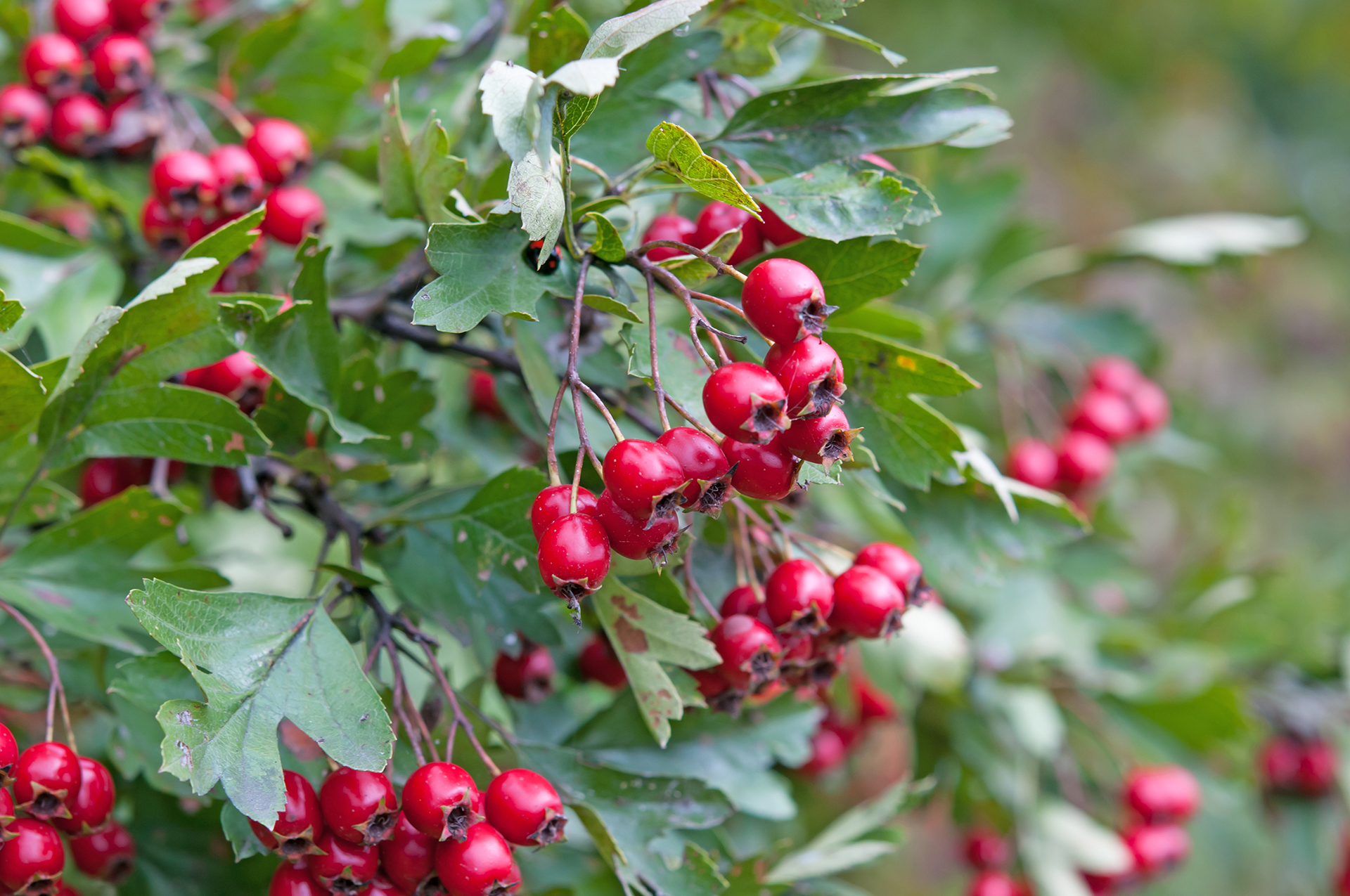
A familiar sight in hedgerows, the hawthorn tree – Crataegus monogyna – also makes a valuable addition to gardens, as its appealing red berries, or ‘haws’, endure through fall and into the winter.
‘The hawthorn tree is a beautiful landscape tree that provides bright colored berries enjoyed by birds, squirrels, rabbits and deer,’ says Smith.
You can consume the haws, as long as you cook them first. ‘Hawthorn berries are prized for their medicinal value, especially for promoting heart health,’ says Shmurak.
To eat hawthorn berries, they are at their best when used to make a sauce, but can also be added to an apple jelly, used to make ‘fruit leather’, or even wine.
In terms of variety, Emilly Barbosa Fernandes, small space gardening consultant at Housegrail, favors the green hawthorn ‘Winter King’. ‘This is one of the trees that display red berries on their branches while the rest of the trees are bare,’ she says. ‘They bloom in the mid to late spring and make a great addition to your yard.’
You should be able to grow hawthorn trees in zones 5 to 9, in most soil types. Ideally they need full sun. Most hawthorns will reach between 15-30ft.
2. Holly
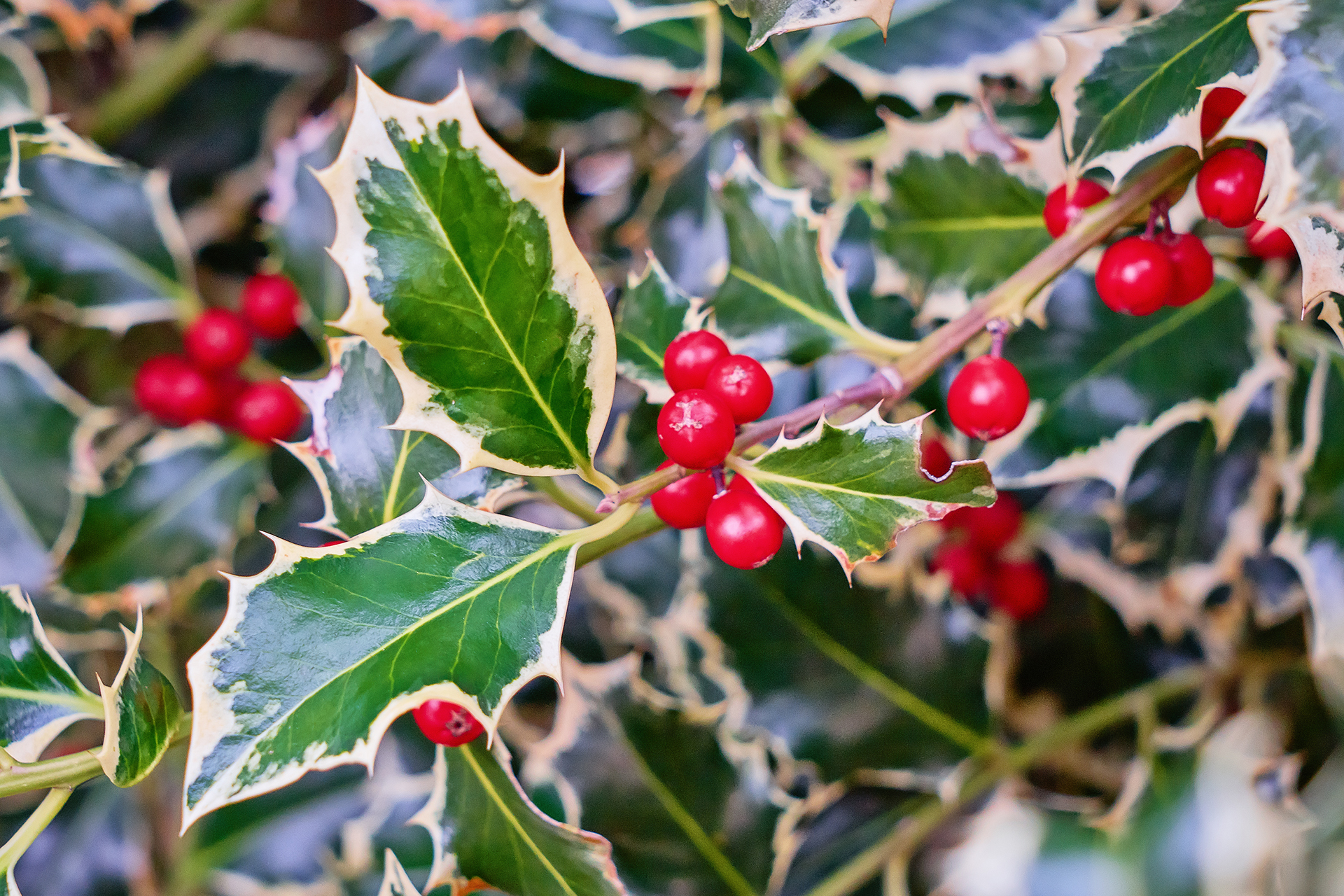
Not just a symbol of Christmas, holly is one of the best trees with red berries to include in your winter garden ideas. ‘A good option is American holly – Ilex opaca – which has glossy, green leaves all winter long and great red berries used regularly in holiday wreaths,’ says Smith.
Holly trees grow well in zones 5-9, and will tolerate partial shade and most soil types. They can eventually reach as tall as 50ft, but you will need more than one tree to get berries, as they don't self-pollinate.
Arborist Mark Russell believes English holly – Ilex aquifolium – is one of the best trees for privacy. ‘While many people use arborvitae or Leyland cypress as privacy screens, they have their drawbacks due to fungus weaknesses,' he says.
'Instead, I recommend homeowners go with an English holly, as they are hearty cultivars, produce fantastic red berries, and make great privacy screens.’
3. Mountain ash – rowanberry

Yielding bright red rowanberries in late summer to early winter, and frothy white blossom in the spring, the mountain ash – Sorbus aucuparia – is an attractive garden tree. The leaves turn a stunning shade of orange in the fall, making it one of the best trees for autumn color.
‘The stunning mountain ash tree produces masses of attractive fruit that birds eat in the winter – and the determined forager can use them if they're willing to make an effort,’ says Shmurak.
While not one of the tastiest berries, rowanberries are rich in vitamin C and have anti-inflammatory properties. However, you do need to freeze them for a couple of weeks before cooking them, and they take a lot of sugar to counteract their bitterness.
Shmurak recommends turning rowanberries into jelly, vinegar, wine, or even Turkish delight.
In the right setting, mountain ash trees are hardy, but they don’t like extreme heat and humidity. You should be able to grow them in zones 3-6, where they can reach around 30ft. Rowanberries will tolerate partial shade and like well-drained soil.
4. Cherry tree

‘Cherry trees are one of my all-time favorite trees with red ‘berries’. Not only do they produce delicious fruit, but the flowers are beautiful too,’ says Barbosa Fernandes.
Unlike many of the other trees featured in this list, cherries ripen during the summer. However, the trees’ stunning blossom often heralds the end of winter, and is one of the first signs that spring is on the way.
There are numerous types of cherry tree you can grow, with options for zones 3-9. Sweet varieties need full sun, but more acidic cooking cherries will grow in partial shade. 'Sweetheart' is a lovely late season variety that has bright red cherries, and is self-fertile.
Cherry trees come in a range of sizes, and dwarf varieties are some of the best trees to grow in pots, so you can position them on the patio.
However, even if you don’t have room for a potted cherry you can still enjoy these wonderful trees: ‘There are many festivals around the United States where you can see cherry trees in full bloom, and then later in the year go try some of the cherries yourself,’ adds Barbosa Fernandes.
5. Chokecherry
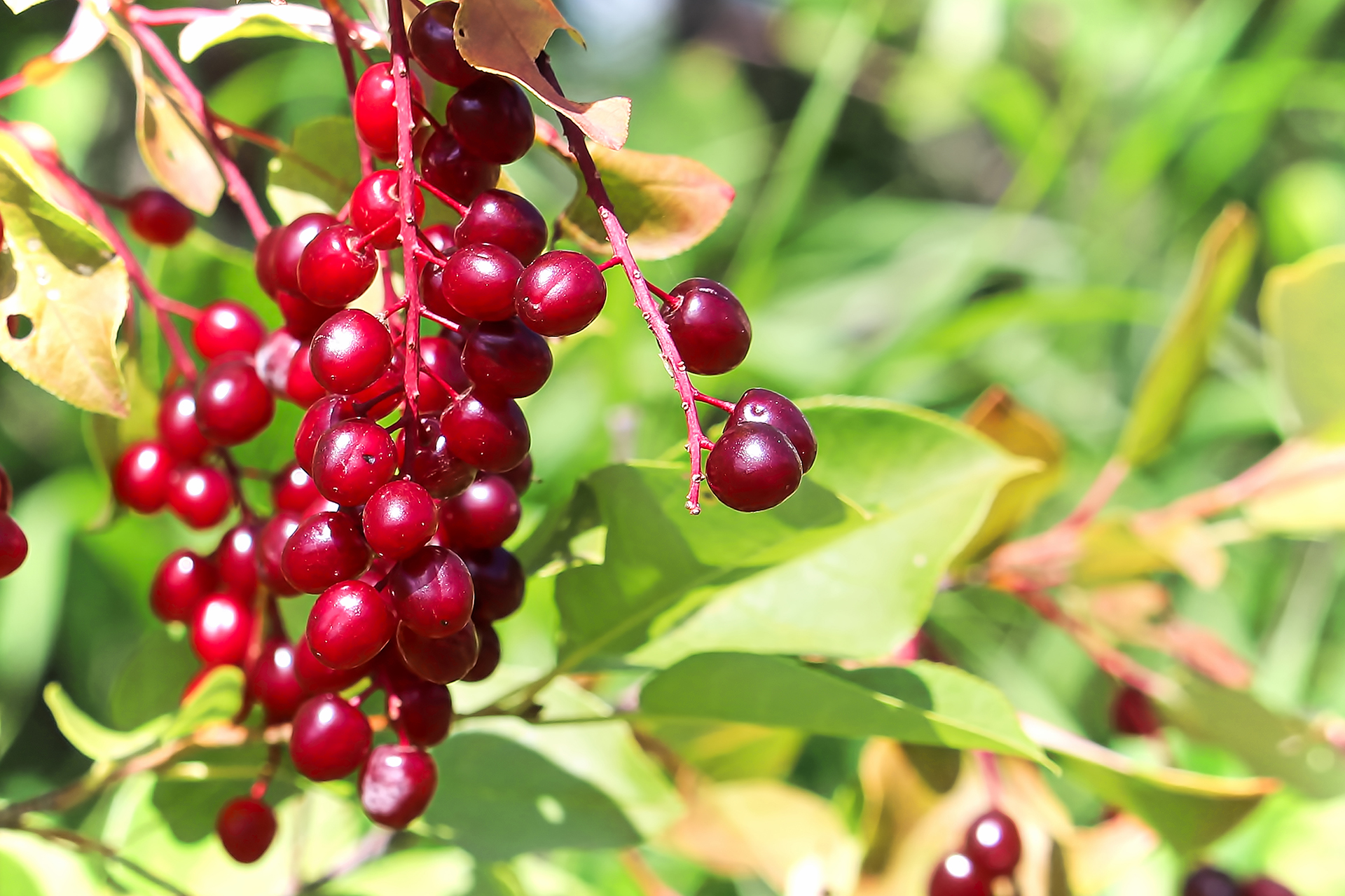
The chokecherry tree – Prunus virginiana – is native to North America. ‘It’s a smaller tree with a dark red fleshy fruit that can be used to make jams, jellies, syrups and wines,’ says Smith.
Packed with antioxidants, chokecherries can be astringent when not fully ripe, although cultivated varieties are sweeter with a cherry-like flavor.
In spring and summer, the tree bursts with clusters of white flowers, making it attractive in the garden for much of the year.
Reaching up to 30ft, the chokecherry is a versatile tree that grows in zones 2-8.
6. Red chokeberry

Not to be confused with the similarly named chokecherry, the chokeberry is a very different plant, though both are named for the effect the fruit can have on the palate.
Technically it’s an upright treelike shrub, and while common varieties are dark blue/purple, the red chokeberry – Aronia arbutifolia – is a stunning shiny ruby hue.
‘In the spring, they have gorgeous white flowers that eventually give way to the bright red berries in the summer months until late fall,’ says Jen Stark, gardening and home writer, and founder of Happy DIY Home.
‘Additionally, the leaves turn brilliant colors in the fall to give you multi-season interest. The berries are too bitter to eat raw, but you can use them in desserts or savory dishes to help balance out the flavor profile.’
This deciduous shrub gets between 6.5-13ft tall and has large leaves, making it one of the best trees for small gardens.
7. Mulberry tree

‘Red mulberry trees – Morus rubra – are wonderful because they produce an immense amount of fruit when in season,’ says Russell.
‘The fruit that they produce is really similar to raspberries, or blackberries. It's super sweet and more than anything super plentiful.’
Mulberry trees can reach up to 80ft, and can be grown in zones 4-9, tolerating part shade.
However, Russell warns not to plant one over your driveway or a walkway – ‘because all of those berries can stain.’ For this reason, mulberries may not be the best trees for front yards.
8. Juneberries
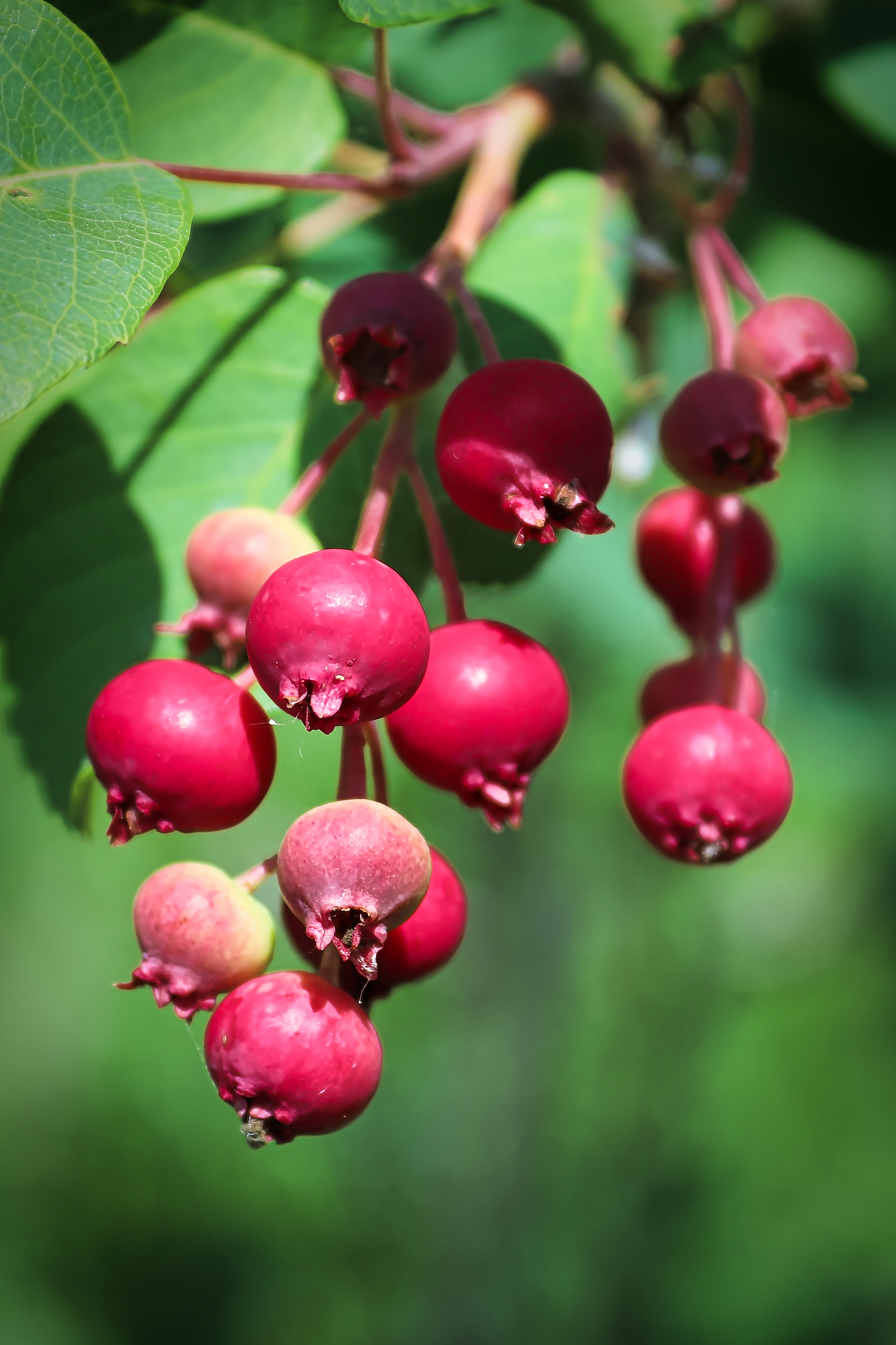
‘Though the ripest berries are a bit on the purply side, my favorite trees with red berries are hands-down juneberries – Amelanchier alnifolia – also known as serviceberry or saskatoon,’ says Shmurak.
‘These delicious blueberry-like fruits grow prolifically in all sorts of conditions, have lovely spring flowers, as well as attractive fall color.’
Juneberries are hardy trees that grow well in zones 2-7, tolerating light shade and damp sites. They typically reach between 15-35ft.
Another benefit of these wonderful trees is that in the spring they produce elegant star-shaped flowers, while in the fall, their foliage turns brilliant red orange.
9. Peruvian pepper

Peruvian pepper – Schinus molle – is also known as the California pepper tree, false pepper, or the American pepper.
'This is an evergreen tree that produces small red berries with a peppery taste,’ says Stark. 'You can eat the berries safely.'
The Peruvian pepper tree does best in arid and hot climates, thriving in zones 8-11, and reaches 25-50ft in height.
‘It has pretty pinnate fern-like leaves with small white flowers in the spring. Its berry-like drupes of pink or red woody seeds grow in large clusters all year long,' adds Stark.
10. Yew

A large coniferous tree, the yew – Taxus baccata – makes a beautiful addition to the garden with its bright scarlet berries in the fall and lush green needles.
It's also an ancient tree with a fascinating history steeped in myth and superstition. While they are difficult to date, there are yew trees believed to be over 3,000 years old.
As an evergreen tree, the yew provides color and screening in the garden year round, and grows in zones 5-7. Though it can reach great heights, it can be pruned to keep it in shape or to serve as a hedge.
However, while it offers lots of landscaping potential, the yew tree is poisonous to humans, so it’s not one to plant if you prefer trees with red berries that you can sample. Happily, the birds can enjoy the berries in safety.
How do I identify a tree with red berries?
To identify a tree with red berries, it helps to find out the common trees that grow in your area, as this will narrow down the options.
Invest in a tree identification book with clear photographs and descriptions to help you examine the tree.
While the presence of red berries provides the first clue, you should also look at the leaf type and shape, as this is slightly different for every tree.
Which trees have red berries in summer?
Popular trees that have red berries in summer include cherry trees, mulberries and juneberries, while hawthorns tend to start developing berries in the summer.

Melanie has worked in homes and gardens media for two decades. Having previously served as Editor on Period Living magazine, and worked on Homes & Gardens, Gardening Etc, Real Homes, and Homebuilding & Renovating, she is now focusing on her passion for gardening as a Senior Editor at Gardening Know How. As a keen home grower, Melanie has experimented with pretty much every type of vegetable at some point – with mixed results. Often it is the simplest things that elude you, which may explain why she just can't seem to master zucchinis.